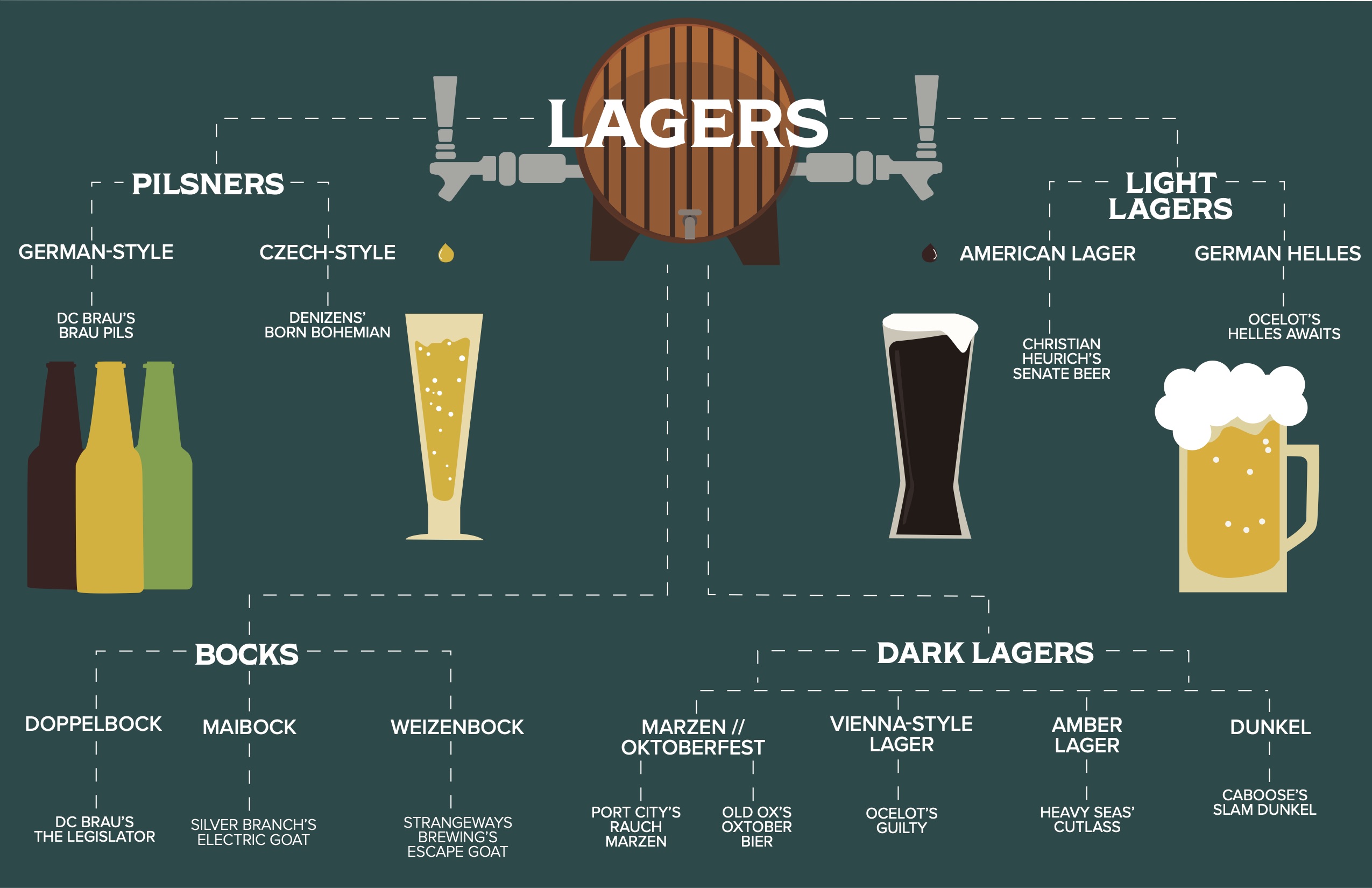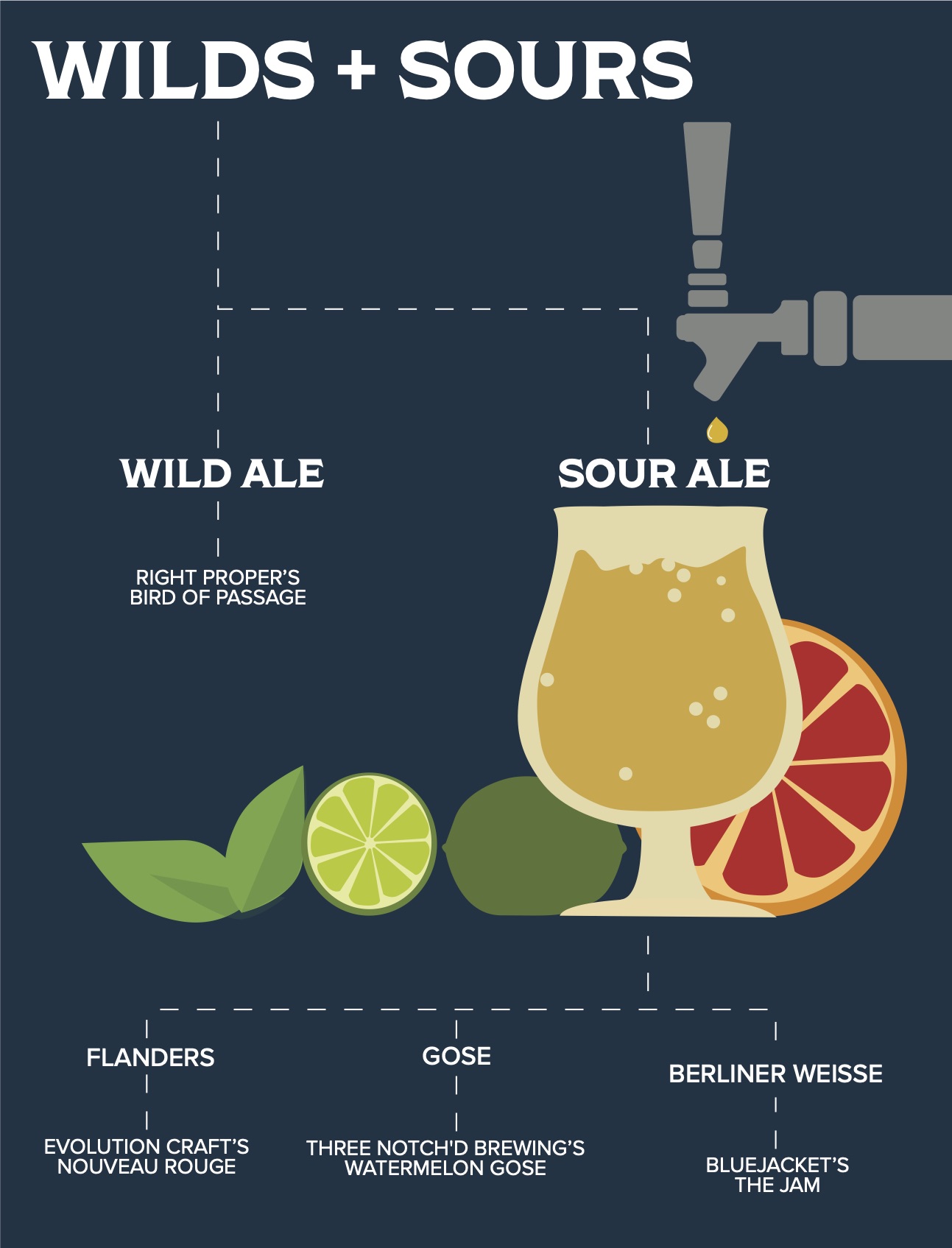Choose Your Beer Adventure

Beer has come a long way since its B.C. days. Back then, beer was actually safer to drink than water, a public health crisis of sorts thanks to the lack of proper sewage systems. While we can’t solve a public health crisis like the novel coronavirus by drinking beer, we can at least pass the time enjoying it under our masks.
That being said, beer drinkers in ancient times didn’t have nearly as many varieties of beer styles to choose from as we do in 2020. Brewers worldwide have created an overwhelming number of styles over the centuries. Where is a craft beer novice to start? In order to understand the main differences between styles of beer, you’ll need a brief chemistry lesson.
Beer comes down to one of two main classifications: ale or lager. The difference between the two depends on the yeast used to ferment it. The fermentation process converts sugars into alcohol and carbon dioxide. Ales are brewed through top fermentation using warmer temperatures. Through this process, the yeast settles at the top of the beer. The fermentation process to create a lager uses colder temperatures and the yeast settles at the bottom.
From there, brewers tinker around with various malts, hops and grains, as well as carbonation levels, bitterness scales and other flavorings. These combinations make an ale an IPA, for example, or a lager a pilsner.
While what’s laid out in these pages is a great place to start, the best way to learn about the infinite world of craft beer is to go out and try it. If you don’t know what appeals to your palate, don’t buy any old six-pack. Find out what styles of beer you like by going to a brewery and ordering a flight of 3- to 5-ounce pours. Ask your bartender questions. If there’s one thing to know about brewery employees, it’s that they love to talk beer.
Since all of the categories, subcategories and sub-subcategories of beer styles could take up an entire book, we’ve narrowed it down to the staples. As an added bonus, we’ve included where you can find each style locally throughout the DMV. So cheers! Prost! Na zdrowie! Salud! However you say it, do it at a socially distant 6 feet apart from others. Air clinks are always Dr. Fauci-approved.
Learn The Lingo: A Craft Beer Glossary
ABV: This term means alcohol by volume, measuring how much alcohol is contained in a given volume of an alcoholic beverage.
Barrel-aged: Barrel-aged beers have exploded in popularity over the last several years. It’s beer that has been aged for a period of time in a wooden barrel that previously housed a liquid like whiskey, bourbon or wine.
Bottle share: A social gathering of beer nerds who each bring a beer to open and share.
Brett: Short for Brettanomyces, it’s a wild yeast that brings out a range of funky flavors. It’s typically used to make wild ales.
Cicerone: Pronounced “sis-uh-rohn,” this term means beer sommelier. In other words, it’s someone certified in all things beer – from food pairings to brewing techniques.
Crushable: Saying a beer is “crushable” means it’s a low ABV, very drinkable beer you could drink more than one of.
Crispy boy: A – you guessed it – crisp beer for easy drinking on a porch in summer or around a firepit.
Drain pour: A beer that tastes so offensively bad you dump it down the drain.
Hazy: Hazy IPAs, or New England-style IPAs, are murky-looking and juicier compared to traditional IPAs.
IBU: This stands for international bitterness units, a scale that gauges a beer’s bitterness.
Imperial: These are beers with an ABV over 7.5 percent. Drink too many and you’ll topple over.
Stout: This is the porter’s fuller-bodied spinoff, an ale commonly misidentified as a strong, extremely heavy beer. While this is true of some, this dark-colored barley brew with a silky mouthfeel can be lighter than expected. Many are even lower ABV and have fewer calories than other beers.
Whale: These are very rare beers that collectors actively seek out – the Moby Dick to your Ahab.
Wort: No, it’s not the lumpy skin growth on your hand. Wort is the liquid extracted from mashed grain during the brewing process.




